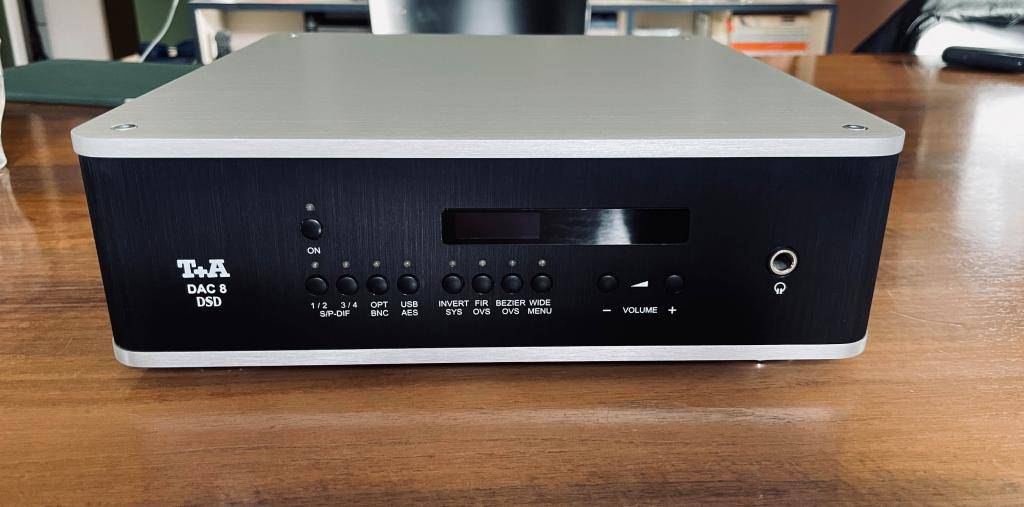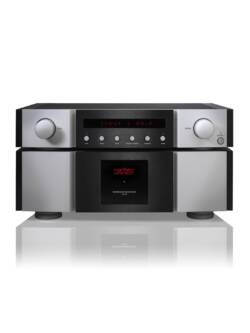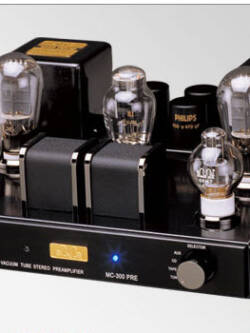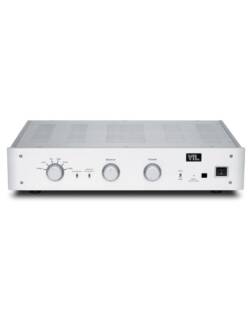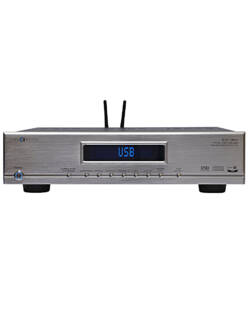T+A Elektroakustik DAC 8 DSD D/A processor
Original price was: R120,000.00.R68,000.00Current price is: R68,000.00.
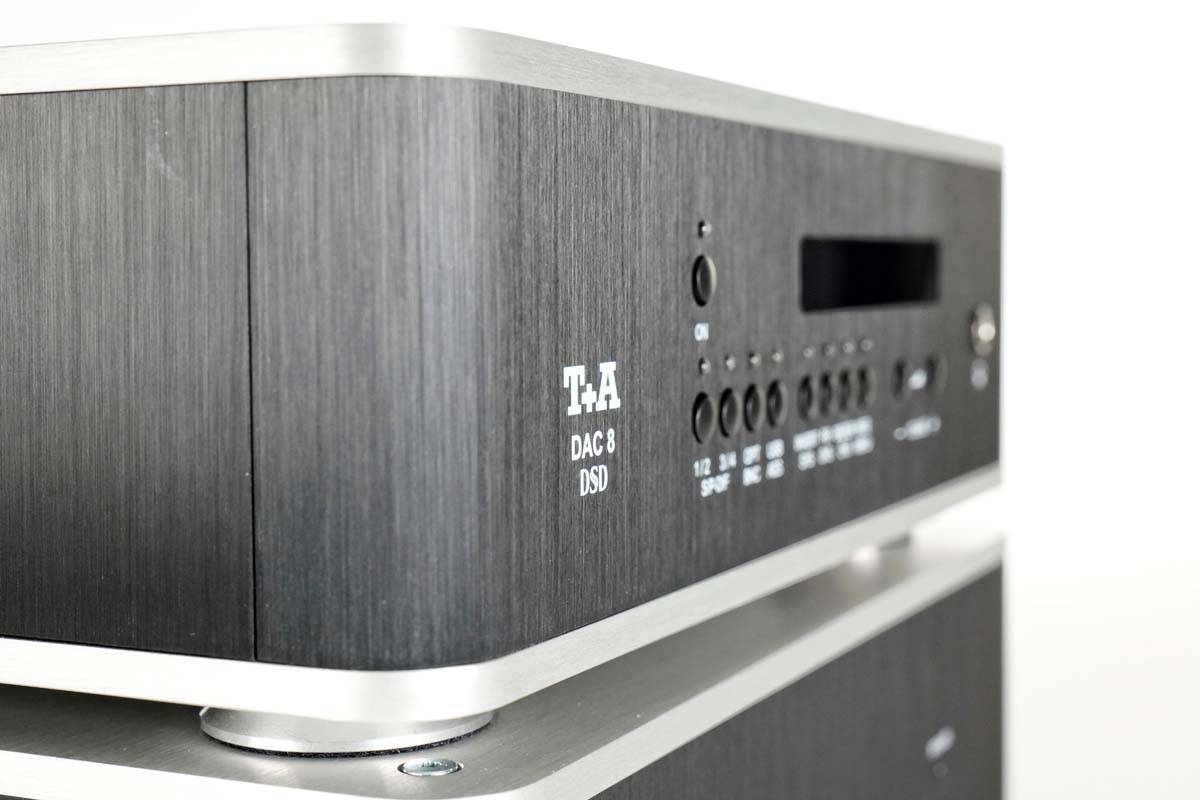
I’ve found Bruce’s observation to be generally true. Ten years ago, I thought there was a wider range of sound quality even among DACs of similar prices—and maybe, back then, there was. But since that time, in my experience, the range has narrowed. Though sound quality is the lion’s share of what counts with any audio component, I think that, for a given price, a new DAC’s appearance and features are beginning to have proportionately more impact in the market. Hence the need to cover all formats, interface options, and functions.
Which brings me to T+A’s DAC 8 DSD, which, for those who want to set up an all-digital system, has about as perfect and complete—on paper—a feature set as I’ve seen in recent months. And though T+A also offers state-of-the-art metal cathedrals of beauty for those willing to spend big—eg, their top-of-the-line combination SACD/CD player and DAC, the PDP 3000 HV, costs $22,500—the DAC 8 DSD comes in a compact, attractive, no-nonsense housing at less than a fifth of that price.
Ooh, it makes me wonder
I first saw the DAC 8 DSD in the flesh last January, at the 2016 Consumer Electronics Show, where I often prospect for review ideas. It’s an updated version of the DAC 8, released a few years back, and it wasn’t in T+A’s main display—but after the company’s Jim Shannon went through the bullet points and explained how T+A’s flagship signal-path circuit designs had trickled down to the DAC 8 DSD’s price range, I quickly moved it up to my short list. I wondered: could I get one for extended listening? The answer was yes, and a couple months later it appeared.
The DAC 8 DSD is a hefty component of modest size, weighing 8.8 lbs and measuring 10.6″ square by 3.75″ high. Its appearance is minimalist and formal, great care obviously having been given to each element’s proportions and placement. In short, without trying too hard, it looks great. And there’s an equally attractive matching power amplifier to go with it, the Amp 8 ($2800).
The main enclosure is a matte-black box of metal, rounded at the corners and stacked between two ¼”-thick slabs of silver aluminum—like an ice-cream sandwich with the colors reversed. There are four small screws on the otherwise featureless flat top and, on the bottom, four metal feet padded with felt. The only fault I found in the cabinet was that it rang a bit, depending on where I tapped it. There were several different pitches available on the top and side panels; with soft mallets or fingertips, I could play a nice tropical tune. Seriously.
On the front are 11 small buttons of identical size, a small display, and a single headphone jack. Starting on the left is the On switch, and below that a group of four buttons. To reduce clutter while accommodating the DAC’s eight inputs, each selector button represents two inputs. Above each button is a light that glows red or blue, depending on which input the button has selected. Once you select an input with a button, the DAC remembers that input unless you hit the button twice—very clever. (The display, too, tells you which input you’ve selected.) Two buttons select among the four S/PDIF inputs: one button for Opt (optical) or BNC input, and one to select between AES and USB inputs.
The next group of buttons select between normal and inverted polarity, four digital filter options, and the user’s choice of either Clean or Wide modes (explained below). Finally, there are volume up and down buttons, activated with a Line/Variable switch on the rear panel. I always prefer a round knob for volume, especially with any device that can be used as a preamp, but these buttons scale the volume intuitively, and were easy to get used to. The volume indicator ranges in setting from “0” to “64,” and two independent volume levels can be set: one each for the rear outputs and the headphone jack. When headphones are plugged in, a relay mutes the rear-panel outputs.
Who shines white light and wants to show
Above these buttons is the high-resolution monochromatic display, which momentarily indicates the status of any control whose button you’ve just pushed, including volume, then reverts to the input sample rate. Below the sample rate is a bar that shows the volume level at all times, and additional small indicators that let you know if a signal is locked, if USB in running in asynchronous mode, and if the outputs are connected. A small incline symbol lets you know that volume for the analog outputs is in Variable mode, as switched on the back. The headphone jack is always in Variable mode, so the incline shows up whenever ‘phones are plugged in.
Since the DAC 8 DSD can indeed handle DSD via USB, the display shows the DSD rate in MHz. The manual includes a handy conversion table, though it took me a few days to get comfortable with these. For example, DSD64 appears on the display as either “2M8 DSD” or “3M1 DSD” (2.8MHz or 3.1MHz), depending on whether the base clock is 44.1 or 48kHz; DSD128 is displayed as “5M6 DSD” or “6M1 DSD”; and so on, all the way up to “22M6 DSD” or “24M6 DSD,” for DSD512.

At the left of the rear panel are balanced (XLR) and unbalanced (RCA) analog outputs, along with the Variable/Fixed switch and an RCA digital output. In the middle is a generous assortment of inputs: four S/PDIF (RCA), BNC, optical, AES/EBU, and USB. The USB input accepts PCM up to 32-bit/384kHz and DSD up to DSD512; DSD256 and DSD512 are possible only with USB streams from Windows operating systems. Detailed setup instructions for this are available on T+A’s website.
Finishing off the rear inputs are an Ethernet jack for “future extensions” and a Ctrl (control) interface for use in combination with Crestron- or AMX-type home-automation systems. Finally, there’s a standard AC connector for the removable power cord. The only feature missing at this point—and who knows if it will matter in the long run—is MQA.
Also included is a small, nicely designed plastic remote control that includes all of the functions found on the front panel, as well as a handy Mute button (which the front panel lacks). The remote was easy to use, and became my preferred method for controlling the DAC 8 DSD, especially when I also used it as a preamp.
The external temperature of the case maxed out at a gentle 93°F—a modest warmth compared to DACs such as the Ayre Codex, which hits 108° after settling in.
And did you know
Several DAC 8 DSD users have reported that the way to go for the best sound, assuming you have a PC with the computing power, is to use Signalyst’s HQPlayer upsampling multichannel audio player, by itself or with Roon, to upsample everything to DSD512 and then output that to the T+A. Since I kept my focus on using the T+A as is, without the additional variable of external software and its possible effects on the sound, I’ll leave that for others to sort out. But with a DAC as endowed as this one is, it might be worth looking into.
Yes, there are two paths you can go by
As mentioned earlier, the DAC 8 DSD incorporates some of the technology developed for T+A’s more expensive products. The most significant of these is the implementation of two completely separate signal paths for PCM and DSD, which T+A feels is the only way to properly optimize processing for each format. This means that the DAC 8 DSD contains two sets of D/A converters, including a 1-bit converter that, T+A points out, does not at any point convert the DSD signal to PCM. In fact, when switching between DSD and PCM sources, you can hear a pair of relays click as the circuit logic shunts the signal from one path to the other.
For PCM conversion, T+A uses their Quadruple Converter circuit, which uses a total of four DACs per channel in a double-differential configuration claimed to perfectly cancel out converter errors and nonlinearities while increasing dynamic range by 6dB. On the DSD side, a proprietary T+A discrete-component design is used, avoiding the conversion to PCM performed by most converters.
T+A’s chief design engineer, Lothar Wiemann, explained to me that “We found that it is very difficult to preserve a true DSD signal path with readymade chips. IC manufacturers in most cases do not disclose what actually happens in their chips, so we really could not depend upon a third-party chipmaker to help us create a truly reference DSD decoder. This is why we chose to construct our own 1-bit converter, to be sure that everything is done in a fully optimized way.” He added that jitter is also minimized by placing the clock oscillators and converters as physically close to each other as possible.
When all are one and one is all
Following conversion from PCM or DSD, either signal is then sent to the same analog section, also with technology developed for T+A’s expensive HV series. This includes a completely discrete I/V conversion circuit with selected high-frequency transistors, and a completely discrete analog reconstruction filter stage with matched JFET audio FETs.
For setting output level, the signal is finally sent to a precision resistor ladder—a fully symmetrical, balanced design. T+A notes that, unlike the “far more expensive” gold-contact relays used in their megabuck products, high-quality electronic switches are used in the DAC 8 DSD. Also, the resistors in the DAC 8 DSD’s volume control are from Vishay’s MMU series of surface-mount devices (SMDs), instead of the bulkier and more expensive Vishay CMF55 resistors used in T+A’s HV series.
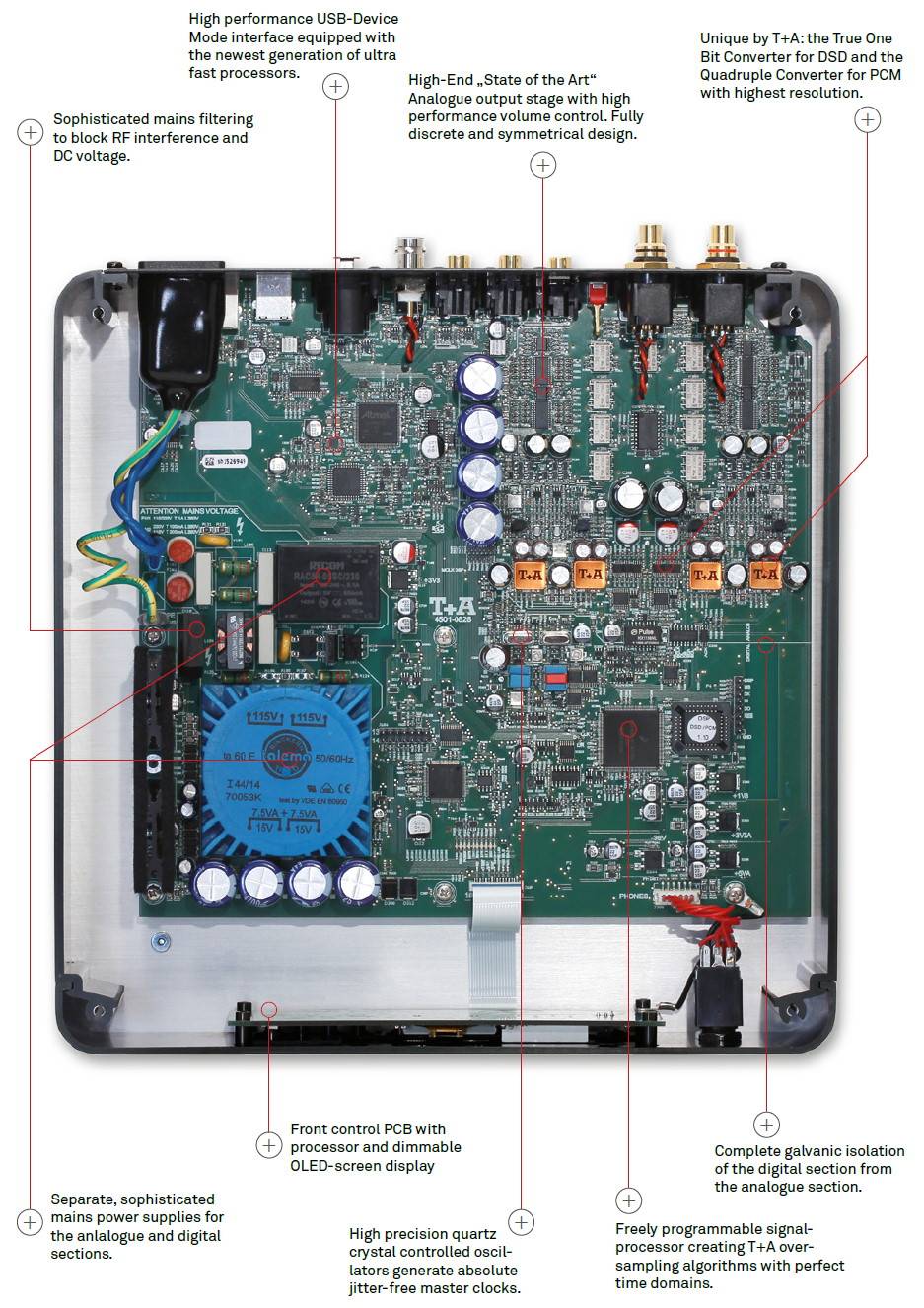
Don’t be alarmed now
Another feature of the DAC 8 DSD is its Clean/Wide option, to prevent possible system meltdowns. An analog filter with a gentle slope is used to remove any high-frequency noise from DSD sources because, as Wiemann explained, “DSD64 signals have a very very high noise floor rising steeply above 20kHz. This noise floor is very negative—it leads to all sorts of problems like intermodulation, and substantial rise of voice-coil temperature in the tweeter. Other side effects might be additional heat in the amplifier, leading to a decrease in bias current and, in turn, to a lower class-A power range. All these effects are negative for the sound, and these effects can be avoided by properly filtering out the high-frequency noise.”
So what the Clean setting actually does is to use a gentle slope, starting around 30kHz, to scrub the unwanted HF noise when using DSD64. The Wide setting is recommended for all other formats, as PCM doesn’t have this problem, and higher DSD rates have lower noise ultrasonic floors than DSD64. During my listening, I used the Wide setting at all times for all formats, without problem. T+A also notes that folks who buy their amplifiers can also use the Wide setting in all cases.
There’s a feeling I get
And now for one of my favorite features of the DAC 8 DSD: switchable custom filters! Why do I get a warm, fuzzy feeling when I see these? Simply because they can be used to fine-tune certain aspects of the sound, and I don’t have to rely on what the designer decided was the “best” set of trade-offs among those inherent in all filters. Of course, this works only if the designer has supplied some good filter options in the first place.
The first two of the four filters in the DAC 8 DSD are variations on the standard finite impulse response (FIR) filter, probably the most common type found in DACs. FIR filters trade off their low-pass frequency-response accuracy with pre- and post-ringing artifacts that show up in the audio signal. T+A’s two options adjust these variables with differing results: less ringing, but also less linearity, in the frequency response; or perfect frequency response, but at the expense of some deleterious ringing artifacts that rob music of its impact and spatial detail. Choose your poison.
Even better, in my opinion, are the DAC 8 DSD’s two custom Bézier filters, the likes of which T+A has been developing for years. A Bézier curve—the smoothest path calculated through a given number of data points—is often used in graphics or, in our case, audio samples. Wiemann said that T+A’s filters are a spline interpolation using Bézier curves, and that “the Bézier interpolation algorithm has no pre-ringing and no post-ringing. It has the best impulse response of all technically possible oversampling methods.”
Briefly, here’s what I heard from the four filter settings:
1) Standard FIR: too steely for my taste, everything a bit blunt.
2) Impulse Optimized: more diffuse, a bit of a hollow sound.
3) Bézier Interpolator plus IIR: better focus, less steel, great detail.
4) Pure Bézier Interpolator: best on paper, but maybe a bit too polite—had a slight watered-down effect compared to Filter 3.
In the end, I chose Filter 3 for pretty much all of my listening. My head knew that Filter 4 might be technically more accurate except for that rolled-off top end, but it lacked the immediacy and presence of Filter 3. And sometimes when doing comparisons, I reverted to Filter 1, to help zero in on what a DAC is doing.
And if you listen very hard
When the DAC 8 DSD arrived, I still had the most excellent Ayre Acoustics Codex in my system. As soon as I’d finished reviewing the Ayre, I replaced it with the T+A and let it settle in for a few weeks before doing any critical listening. It was a smooth transition: after I’d fiddled with filters and settled on Filter 3, the T+A quickly made itself at home.
All the usual album suspects made appearances—but, fully aware that T+A’s Lothar Wiemann is a prog-rock fanatic, I pulled out four favorites: Happy the Man’s Crafty Hands (CD, BMG 37616), Gong’s Gazeuse! (CD, Virgin CDV-2074), Camel’s Mirage (CD, Deram 8206132), and Führs & Fröhling’s Ammerland (CD, Nordsee 22011). Yes, I just heard groans from some of you—but if you haven’t heard these albums through a good system, you’re missing out.
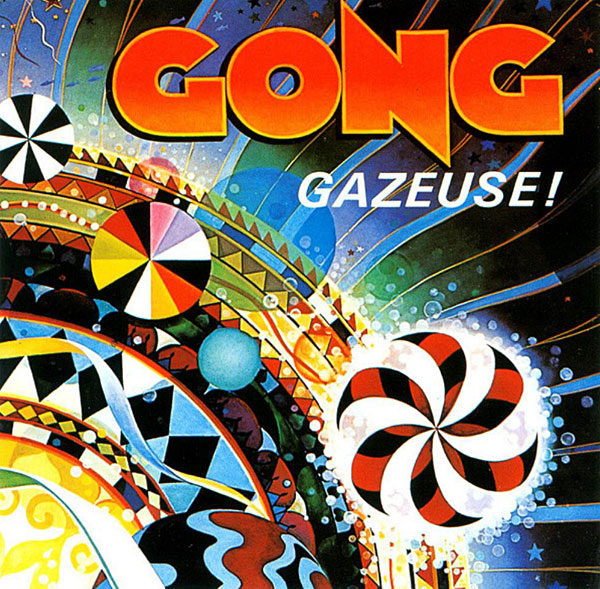
The best recording of the lot is arguably track 3 of Gazeuse!, “Percolations, Parts 1 & 2″—a no-brainer demo track featuring great analog recording and some inspired and frenetic vibraphone, marimba, and drums. The drums in particular are manipulated throughout as the recording engineers vary their placements on the soundstage, play with room effects, and shift the width of the image. This amazing track quickly reveals where a DAC is at: as the drums rattle around the room, lesser DACs give them a plasticky sound and muddier images.
The DAC 8 DSD laid out everything with finesse, clearly separating all layers with a strongly dynamic and wooden thwack as each drum is hit. Marimba and vibraphone notes hung in the air with natural decays, and I could easily hear the drums spread out, then collapse back in, and then out again as the mix engineer manhandled the imaging. Probably the word that best characterizes the T+A’s sound with this track is precision, but let me be clear: For me, more precision translates to being further inside the music, connecting with a recording with fewer distractions. I regard those slight euphonic tendencies in some products as fuzz or vagueness, not some romantic sheen that enhances the music. And we all know that what happens in vagueness stays in vagueness.
On to something musically different: Führs & Fröhling build their tracks around beautifully recorded acoustic guitars, and with the T+A, again there was plenty of detail, and gobs of ambient space around the room. My notes say that the reverb size and tails in particular were handled well. The title track of Ammerland begins with classical-guitar arpeggios, later joined by various synths and a Mellotron or two. Definitely the lighter side of prog, but essential nonetheless.
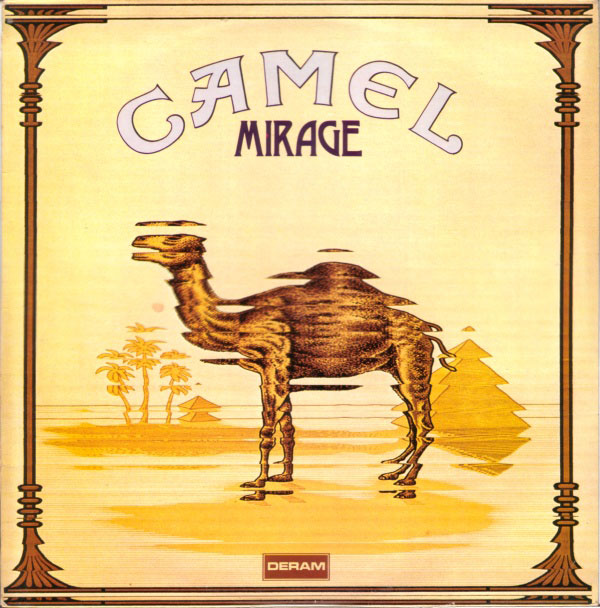
Camel’s second album, Mirage, heads in a more standard prog-rock direction—electric guitar, keyboards, bass, drums, etc.—and features a standout track, “Nimrodel/The Procession/The White Rider.” (I know, prog titles can be a bit much.) Its last two minutes comprise a stunning slide-guitar solo that floats all around the room, and the T+A imaged it as wide and as tall as I’ve ever heard it.
Finally, I popped on the 2005 Japanese pressing of Happy the Man’s Crafty Hands. “Open Book” has an acoustic, renaissance-inspired central section sandwiched between electric-prog movements. Layering and depth were excellent, and in particular, the two tambourines sounded natural and clear, holding distinct and solid spots just off center-left and -right on the soundstage. These are complicated recordings, and the DAC 8 DSD let me hear clearly into their many parts.
If we all call the tune
I still had Ayre’s Codex and QB-9DSD on hand, and did some listening back and forth with the T+A. In my review of the Codex last June, I’d praised it (and the QB-9DSD) for how clearly and cleanly it laid out complicated music, and the T+A DAC 8 DSD accomplished the same, with perhaps just a tad more detail and spatial depth with Filter 3. The tonal balances of all three DACs were very similar: blindfolded, I couldn’t have told them apart.
It’s interesting to note that John Atkinson’s measurements, in the June issue, of Ayre’s filter for the Codex and QB-9DSD look very similar to T+A’s measurements of their Bézier-plus-IIR option: minimal ringing, and a somewhat gentle rolloff in frequency response. So I’m not surprised that I found Filter 3 almost indistinguishable from the Ayre QB-9DSD and Codex. After I’ve turned in this review, we’ll see how the T+A performs in JA’s measurements.
I’m agnostic about DSD vs PCM, but because T+A has taken the trouble to provide a separate DSD signal path, it seemed a good idea to pit these DACs against each other on the basis of DSD. I sorted through a few recordings and finally focused on Bill Frisell’s Richter 858 (CD, Songlines SGLSA 15512), with its often cacophonous impressions of eight works by the German painter Gerhard Richter. This all-analog recording of Frisell’s guitar, accompanied by violin, viola, and cello, works its way through every sound these instruments can make and reveals plenty of detail.
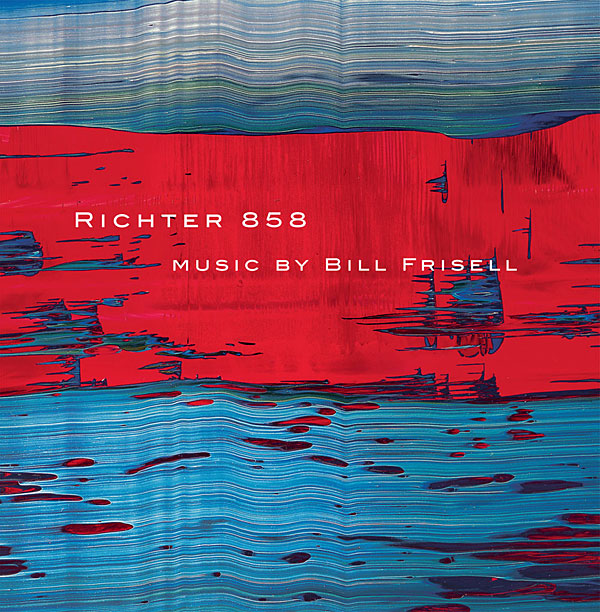
The T+A shone in comparison to the Ayre pair—as, I’m guessing, it would have with many of the DACs I’ve had in the recent past. (But I’m going by instinct here; in reviewing DACs, which can sound so similar to each other, aural memory just doesn’t cut it.) In a word, there was more flow with the DAC 8 DSD, and, at the same time, little transient details seemed to have a tad more snap. Again, not a huge difference, but noticeable when I listened for it.
Your head is humming
I also did some headphone listening while the Codex was still here, and on this count I give a slight edge to the Ayre, but only in balanced mode. (The DAC 8 DSD has only an unbalanced headphone jack.) Soundstage depth was slightly more apparent, but through Audeze’s LCD-X headphones with the levels matched and using both DACs unbalanced revealed no clear winner. With headphones, both the Ayre and the T+A bettered the Benchmark DAC2 HGC DAC, which sounded thinner than either.
Also on hand were the MrSpeakers Ether planar headphones, which are less sensitive than the Audezes (which are quite efficient for planar ‘phones), requiring me to turn up the DAC 8 DSD a tad. In fact, though the T+A could get plenty loud with most recordings, it topped out in volume sooner than either the Ayre Codex or the Benchmark DAC2 HGC.
And as we wind on down the road
Finally, I invited a fellow audio-club member over for some listening, to compare the T+A DAC 8 DSD with the Benchmark DAC2 HGC in my main system. John Salvini is a pilot for United Airlines, so we put together a list of his favorite flying-related tracks. We began with Gordon Lightfoot’s “Early Morning Rain” (“Out on runway number 9, big 707 set to go . . .”), which has been covered by the Grateful Dead, Peter, Paul & Mary, Elvis Presley, Bob Dylan, Judy Collins, and others. We ended up using the song’s first official recording, from 1965, on Ian & Sylvia’s Early Morning Rain (CD, Vanguard 79715).
With the Benchmark, John noted that the acoustic guitar popped forward just a bit, while the instruments and voices balanced better through the T+A. We agreed that the DAC 8 DSD sounded slightly more colorful tonally, less pastel or bleached, than the Benchmark. John remarked that the differences became noticeable only after we’d listened to the track four times all the way through with both DACs.
We were pulling up the Byrds’ “Eight Miles High” when we got sidetracked, and instead focused on an early pre-Byrds track, “The Only Girl I Adore,” by Jim McGuinn (who later changed his name to Roger), David Crosby, and Gene Clark, who at that point called themselves the Jet Set. It’s a great, raw acoustic recording in mono, with gobs of character, three-part harmonies in fake Beatles accents, and “Yeah, Yeah, Yeah”s. It’s available on both the Byrd Parts (CD, Raven RVCD 77) and The PreFlyte Sessions (CD, Sundazed SC 11116).
With the T+A, we could pick out individual voices a bit better, though in both cases the lead vocal sounded very similar. However, John also noted that there was less body to the single acoustic guitar with the Benchmark. We finally did return to “Eight Miles High,” from Fifth Dimension (CD, Columbia/Legacy CK 64847), and agreed that the DAC 8 DSD sounded a touch more dynamic, with more impact in the opening bass lines.
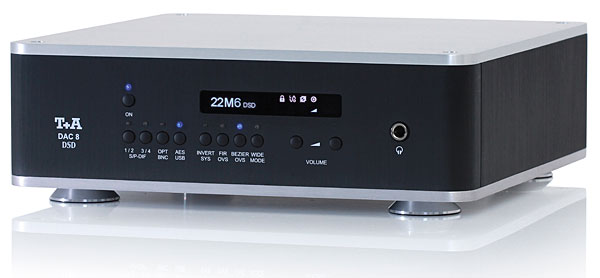
John agreed that it took concentration to detect these differences, but he felt it was worth the effort, and by the end of the afternoon had become more confident in telling DAC from DAC. Yes—with delicate differences hidden in subtle sonic shades that are far from obvious on first listen, it’s so damn hard to tell DACs apart, as Bruce Rowley notes in the intro.
The piper’s calling you to join him
Often, a company’s most expensive product is not its greatest product. The flagship might be the best they have to offer, but for me, greatness requires paring down any excess to the absolute minimum, while retaining the essence of the qualities that made the best the best in the first place.
In other words, I love efficient, effective design that maximizes value. I perceive lots of thick metal and large knobs as being little more than extra fat, and overly detailed power supplies, with beautiful graphics and shiny surfaces, as exercises in sensuality (in and of itself, not a bad thing) that lack restraint and focus. Often, those things are there because the designers have allowed themselves to chase every little detail down into a hole.
T+A Elektroakustik’s DAC 8 DSD has none of these faults, yet approaches the performance of cost-no-object designs, and so represents good relative value at $3995. This is the distilled version of the tech found in T+A’s flagship models: nothing gratuitous, nothing included “just in case,” but plenty of careful choices made to maximize bang for buck.
Two caveats: I would have preferred a volume knob instead of buttons, and maybe a bit more oomph in the headphone section. But otherwise, I can’t fault the DAC 8 DSD’s sound—it sits comfortably with the sounds of more expensive products, such as MSB Technology’s Analog DAC ($6995), Chord Electronics’ splendid-sounding Hugo TT ($4795), and Antelope Audio’s Zodiac Platinum ($5500 as reviewed), all of which I’ve reviewed in the last two-and-a-half years. And the DAC 8 DSD provided the best sound from DSD that I’ve heard.
If you’ve been following the clues, some of you already know where this is going to end: The T+A Elektroakustik DAC 8 DSD could be your stairway to sonic heaven.
Description
Specifications
32-Bit Sigma Delta, 352,8 kSps/384 kSps. Eight times oversampling.
Upsampling: free programmable signal processor with four selectable oversapling algorithims. FIR kurz, FIR lang, Bezier/IIR, Bezier
In- / Outputs
1 x opt. TOS-Link, 1 x BNC,
1 x AES/EBU; 32 kSps; 44,1 kSps; 48 kSps; 88,2 kSps; 96 kSps; 176,4 kSps; 192 kSps; 16/24 Bit
PCM-Mode: 44,1 kSps; 48 kSps; 88,2 kSps; 96 kSps; 176,4 kSps; 192 kSps;
352,8 kSps; 384 kSps; 16/24/32 Bit
DSD-Mode: DSD64; DSD128; DSD256; DSD 512; (MAC OS up to DSD 128)


